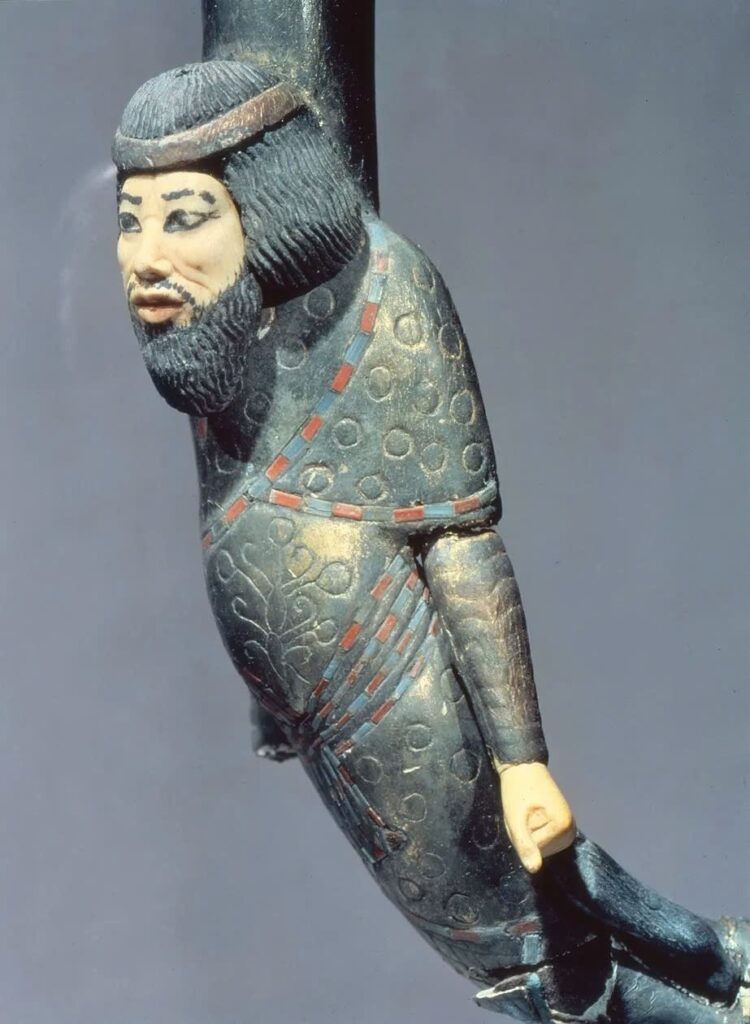A Royal Collection Unveiled

In the depths of King Tutankhamun’s tomb (KV62) in the Valley of the Kings, archaeologists made a surprising discovery: an astonishing collection of 130 walking sticks. This find not only shed light on ancient Egyptian customs but also revealed intriguing details about the young pharaoh’s life.
The Cane of Conquest

Among these treasures, one walking stick stands out for its unique properties and intricate design. Legend has it that when Tutankhamun grasped this particular cane, his enemies would be magically turned upside down, rendering them harmless. The stick’s power was further emphasized by a papyrus bearing the king’s cartouche at its opposite end.
Symbols of Nobility and Necessity
While initially thought to be mere symbols of power and nobility, these walking sticks are now believed to have served a more practical purpose. Given Tutankhamun’s young age at death (19 years old), the abundance of canes suggests he may have had difficulty walking and standing, using them as ancient forms of crutches.
Artistry in Subjugation
Enemies Immortalized in Craftsmanship

One particularly noteworthy cane from the collection depicts two of Tutankhamun’s enemies:
- An Asiatic figure, characterized by:
- Hairy appearance
- Clothing adorned with ribbons, circular, and floral designs
- Ivory-crafted hands, face, and feet, representing light skin
- An African figure, featuring:
- Ebony-crafted face and limbs, simulating dark skin
- Attire consisting of a pleated garment with multicolored streamers
These canes were not merely decorative but played a role in ceremonial events during the pharaoh’s lifetime.

Historical Significance
Dating back to the New Kingdom, late 18th Dynasty (circa 1332-1323 BC), these walking sticks offer a unique glimpse into the reign of Tutankhamun. The collection’s size and variety led excavator Howard Carter to speculate that the young king might have been an amateur collector of canes.

Today, these remarkable artifacts, including the cane described above (cataloged as JE 61732), can be viewed at the Egyptian Museum in Cairo, continuing to captivate visitors with their blend of artistry, symbolism, and historical significance.
